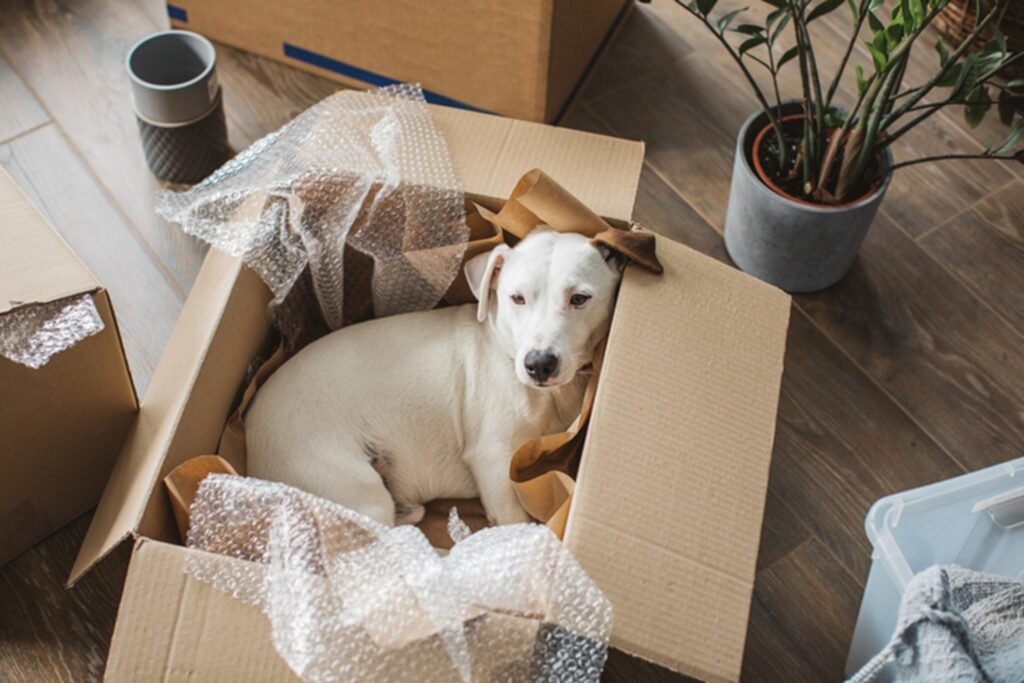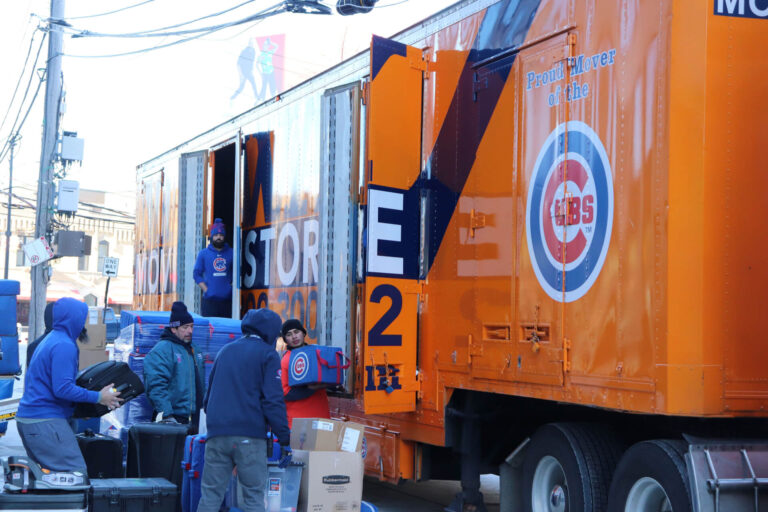Tips For Moving in Winter: Your Complete Guide to a Smooth and Stress-Free Move
January 20, 2025
- Blog
- |
- Apartment Moving
- |
- Commercial Moving
- |
- Full Service Moving
- |
- Full-Service Packing
- |
- Local Moving
- |
- Long Distance Moving
- |
- Moving Tips
- |
- National Moving
Moving in the Winter months comes with unique challenges, but with the right amount of planning, you can make the process smooth and stress-free. From dealing with snow and ice to protecting your belongings and ensuring safe travel, this guide will walk you through everything you need to know for a successful winter move.
Preparing for Winter Weather During Your Move
Winter weather can be harsh and unpredictable. From October to March the country’s most seasonally-prone regions such as Alaska, the Northern Great Plains, the Midwest, and Northeast can see day-to-day swings in conditions from snow to sleet or ice storms and of course, bitter cold. We recommend keeping an eye on forecasts leading up to your moving day and prepare to adjust your plans if a storm is expected. We realize flexibility isn’t always an option depending on when the sale or purchase of your home is finalized. You may be expected to be completely vacated by a certain date. If you know there will be a tight deadline, consider packing your belongings early and renting a self storage unit to keep your items safe during the transition.
Winter Safety Considerations
Moving can be somewhat dangerous even with beautiful weather. Carrying awkwardly-shaped or heavy items requires patience and care. Add in snow, ice, and cold temperatures and a simple mistake could lead to serious injury or damage to your property.
If you’ll be moving in freezing temperatures, we recommend spreading ice melt or salt regardless of whether or not rain or snow is in the forecast. Moisture on the ground for any reason can become a slipping hazard.
In snowy or icy conditions, shovel your driveway and walkways to ensure clear, unobstructed paths for you or a moving crew.
Consider wearing boots with deep tread and gloves with grips to limit slipping and dropping belongings
Protecting Your Home from Snow and Ice
Moisture from melted snow and salt can damage flooring very quickly, especially hardwoods. Tile, vinyl, and carpet are less prone to damage, however, scratches from salt or stains from melted snow and dirt can be difficult to remove. We recommend laying down durable mats or runners in high-traffic areas, and consider using canvas tarps or carpet shields to protect against snow, mud, and ice.
Stage Belongings Near Your Door
Creating a staging area by moving your packed items and furniture near the entrance can help limit the spread of snow and debris into other rooms. Avoid using plastic coverings, as they can become dangerously slippery when wet.
 Packing and Protecting Belongings
Packing and Protecting Belongings
Cold temperatures can affect certain items more than others. Plastic and glass items become more brittle and prone to cracking and breakage in cold temperatures. Try wrapping in bubble wrap or filling your boxes with packing peanuts to mitigate damage.
Battery-operated items, such as power tools or ride-on toys like power wheels, require special attention:
Remove the batteries before packing and store them in a temperature-controlled environment, we recommend transporting them in the cab of your vehicle or keeping them indoors as long as possible. Prolonged exposure to cold or freezing temperatures can damage them. For anyone who knows how expensive power tool batteries can be, this is an important one for protecting your investment!
When packing your belongings, focus on insulating delicate items with thermal wraps or blankets. Keep essential items and sensitive belongings in a separate, easily accessible box to avoid unnecessary delays. Also, steer clear of packing liquids that could freeze and expand, causing damage.
Lastly, nobody likes a soggy mattress. Plastic mattress covers or cardboard cartons work wonders, and provide an extra layer of protection against an accidental dip in the snow or slush.
Staying Comfortable During the Move
Layered clothing is your friend! Because loading and unloading items during a move can be physically demanding, we suggest multiple light layers of clothing so you can remove or add layers depending on how hot or cold you get while carrying that couch to the second floor.
For added comfort, have a thermos of coffee, tea, or hot cocoa on hand for you and your helpers.
Know Your New Climate
For those moving away from warm weather, and into the cold, we ask… Why? Consider spending a few minutes researching the climate of your new home’s location and plan accordingly. January may be shorts and flip flop weather in South Florida, but you’ll be in for a rude awakening by the time you reach Chicago.
Planning for Travel Delays and Preparing Your New Home
Winter road conditions can be unpredictable, so allow extra time for travel and loading or unloading. Having a buffer in your schedule can help you avoid unnecessary stress.
At your new home, ensure that utilities like heating and electricity are turned on before moving day if possible. Many times, utilities companies will shut off electric and gas at a vacant home to minimize energy waste. We recommend packing blankets and warm clothing last, in case there are delays in getting the lights and heat back on in your new home.
If you’re able to visit the property ahead of moving day, this is also a great time to shovel walkways and spread ice melt in high-traffic areas to ensure safety.
 Moving with Pets and Children in the Winter
Moving with Pets and Children in the Winter
Pets and young children can be especially vulnerable to cold temperatures and the hustle and bustle of moving day. If possible, arrange for a friend, neighbor, or family member to watch them during the move.
To ensure the safety of pets and children, designate a quiet room for pets if they need to stay at home during the move. For children, provide warm, comfortable clothing and engage them with indoor activities. If the move will take an extended period, consider professional boarding for pets to reduce their stress.
How to Ensure Your New Home is Ready for Winter
Moving into a new home during winter comes with unique challenges, especially when it comes to preparing your home for colder weather. Winterizing your home ensures it’s safe, energy-efficient, and protected from the elements. Here’s what to check and what to do to winterize your new home:
Key Items to Check
- Heating System: Test your furnace or central heating to ensure it’s working properly. If it hasn’t been serviced recently, schedule a professional inspection.
- Insulation: Check the attic, walls, and crawl spaces for proper insulation. Poor insulation can lead to heat loss and higher utility bills.
- Windows and Doors: Inspect for drafts or gaps around windows and doors. These can be sealed with weatherstripping or DIY shrink film insulation kits
- Gutters and Downspouts: Ensure gutters are clean and free of debris to avoid ice buildup, which can lead to leaks or damage.
- Pipes: Look for exposed pipes in unheated areas like basements or crawl spaces. These should be insulated to prevent freezing and bursting.
- Fireplace and Chimney: If your home has a fireplace, have the chimney inspected and cleaned before using it to ensure it’s safe and clear of debris.
Essential Winterizing Tasks
- Seal Drafts: Apply weatherstripping to doors and caulk around windows to block cold air.
- Insulate Pipes: Wrap exposed pipes with foam insulation to prevent freezing during extreme temperatures.
- Replace Filters: Change furnace filters regularly to keep your heating system running efficiently.
- Install Detectors: Ensure working carbon monoxide and smoke detectors are in place on every level of your home.
- Trim Tree Branches: Remove overhanging branches near the house to prevent damage from falling limbs during heavy snow or ice.
- Stock Essential Supplies: Keep salt, shovels, and de-icer on hand for quick snow and ice removal.
 Simplify Your Move With a Professional Moving Company
Simplify Your Move With a Professional Moving Company
While it’s possible to manage a winter move on your own, hiring experienced movers can make the process significantly easier. Professionals are equipped to handle icy roads, protect your belongings, and ensure the move is completed efficiently. This option can be especially valuable if you’re facing tight deadlines or challenging weather conditions.
The Bottom Line
A winter move doesn’t have to be daunting. With careful preparation, attention to detail, and a flexible mindset, you can enjoy a smooth transition to your new home. Whether you’re managing the move yourself or enlisting the help of professionals, these tips for moving during winter will ensure your cold-weather move is safe, efficient, and stress-free.
We hope these tips will help you when you are planning and preparing for a wintertime move. For more moving tips, or to request a free moving and storage quote, please feel free to contact Midway Moving & Storage, the proud mover of the Chicago Cubs, at (866) 693-4148 today!



